ZAMBIA
ZAMBIA
ZAMBIA
The home of mighty rivers
Zambia is blessed with some of the most incredible rivers and wetlands in sub-Saharan Africa, around which lay pristine wilderness areas filled with fabulous wildlife. The Kafue, Luangwa and, of course, the mighty Zambezi, are all legendary watercourses in their own right with rich floodplains that form an integral part of the tapestry of eco-systems this country is renowned for.
Easily one of the friendliest nations on the continent, Zambia's people are wonderfully warm and welcoming, with diverse tribal cultures and languages, as well as some of the best coffee we've ever tasted! From the bustling town of Livingstone, home of the Victoria Falls which it shares with neighbouring Zimbabwe, and the wide-open spaces of Liuwa Plain National Park to the remote, rugged landscapes of the South Luangwa and rich floodplains of the Lower Zambezi Valley, Zambia has safari charisma in spades!
Zambia does everything in XL format and nothing half-hearted... Mammoth river systems, huge mammal migrations, whopping great lakes and swamps, giant waterfalls... You name it, it's most likely supersized and world-beating.
In the north you'll find Lake Tanganyika - the deepest lake in Africa - with its incredible freshwater fish and huge crocodiles. There's the Bangweulu Swamps - a pristine Ramsar site where the mysterious shoebill stork is found and Kasanka National Park where every November millions of straw-coloured fruit bats congregate in the largest mammal migration on Earth.
The result? Unadulterated safari magic...
The home of mighty rivers
Zambia is blessed with some of the most incredible rivers and wetlands in sub-Saharan Africa, around which lay pristine wilderness areas filled with fabulous wildlife. The Kafue, Luangwa and, of course, the mighty Zambezi, are all legendary watercourses in their own right with rich floodplains that form an integral part of the tapestry of eco-systems this country is renowned for.
Easily one of the friendliest nations on the continent, Zambia's people are wonderfully warm and welcoming, with diverse tribal cultures and languages, as well as some of the best coffee we've ever tasted! From the bustling town of Livingstone, home of the Victoria Falls which it shares with neighbouring Zimbabwe, and the wide-open spaces of Liuwa Plain National Park to the remote, rugged landscapes of the South Luangwa and rich floodplains of the Lower Zambezi Valley, Zambia has safari charisma in spades!
Zambia does everything in XL format and nothing half-hearted... Mammoth river systems, huge mammal migrations, whopping great lakes and swamps, giant waterfalls... You name it, it's most likely supersized and world-beating.
In the north you'll find Lake Tanganyika - the deepest lake in Africa - with its incredible freshwater fish and huge crocodiles. There's the Bangweulu Swamps - a pristine Ramsar site where the mysterious shoebill stork is found and Kasanka National Park where every November millions of straw-coloured fruit bats congregate in the largest mammal migration on Earth.
The result? Unadulterated safari magic...
ZAMBIA IN A NUTSHELL
The where...
Here are some of the must-visit places we recommend including on a Zambian safari that can easily be combined with one another as well as a range of other complementary destinations...
ZAMBIA IN A NUTSHELL
The where...
Here are some of the must-visit places we recommend including on a Zambian safari that can easily be combined with one another as well as a range of other complementary destinations...
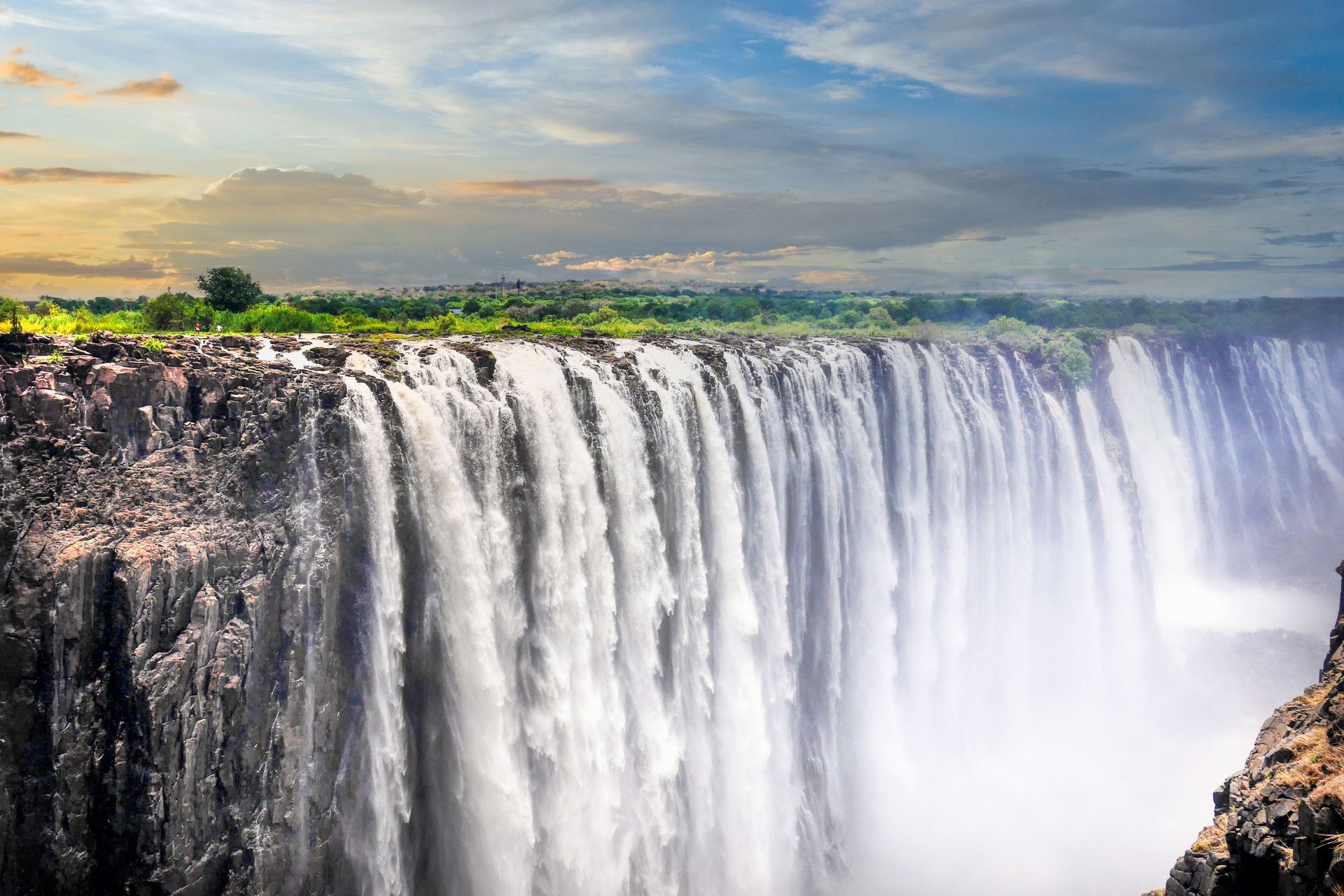
Livingstone
Named for Dr David Livingstone who, in 1855 was the first European to witness the might of the falls he named for his queen - Victoria - the town of Livingstone was founded in 1905 on the edge of the then swampy banks of the Zambezi River where it plunges 108m straight down into a gaping chasm, forming the world's largest falling body of water that's 1,7km wide during peak flood season. Today, Livingstone is a vibrant, bustling town that provides excellent access to a range of adventure activities based in or around the river and the falls. It's also a busy border post with neighbouring Zimbabwe, with the town of Victoria Falls just across the historic rail and road bridge that spans the Batoka Gorge.
Musts: Microlight over the falls; swim in Devil's Pool on the edge of the main cataract (in the dry season); helicopter flights, bungee jumping, gorge swing and zip-lining; white-water rafting; jetboating; game drives in the Mosi oa Tunya National Park; cultural village tours
Livingstone
Named for Dr David Livingstone who, in 1855 was the first European to witness the might of the falls he named for his queen - Victoria - the town of Livingstone was founded in 1905 on the edge of the then swampy banks of the Zambezi River where it plunges 108m straight down into a gaping chasm, forming the world's largest falling body of water that's 1,7km wide during peak flood season. Today, Livingstone is a vibrant, bustling town that provides excellent access to a range of adventure activities based in or around the river and the falls. It's also a busy border post with neighbouring Zimbabwe, with the town of Victoria Falls just across the historic rail and road bridge that spans the Batoka Gorge.
Musts: Microlight over the falls; swim in Devil's Pool on the edge of the main cataract (in the dry season); helicopter flights, bungee jumping, gorge swing and zip-lining; white-water rafting; jetboating; game drives in the Mosi oa Tunya National Park; cultural village tours.
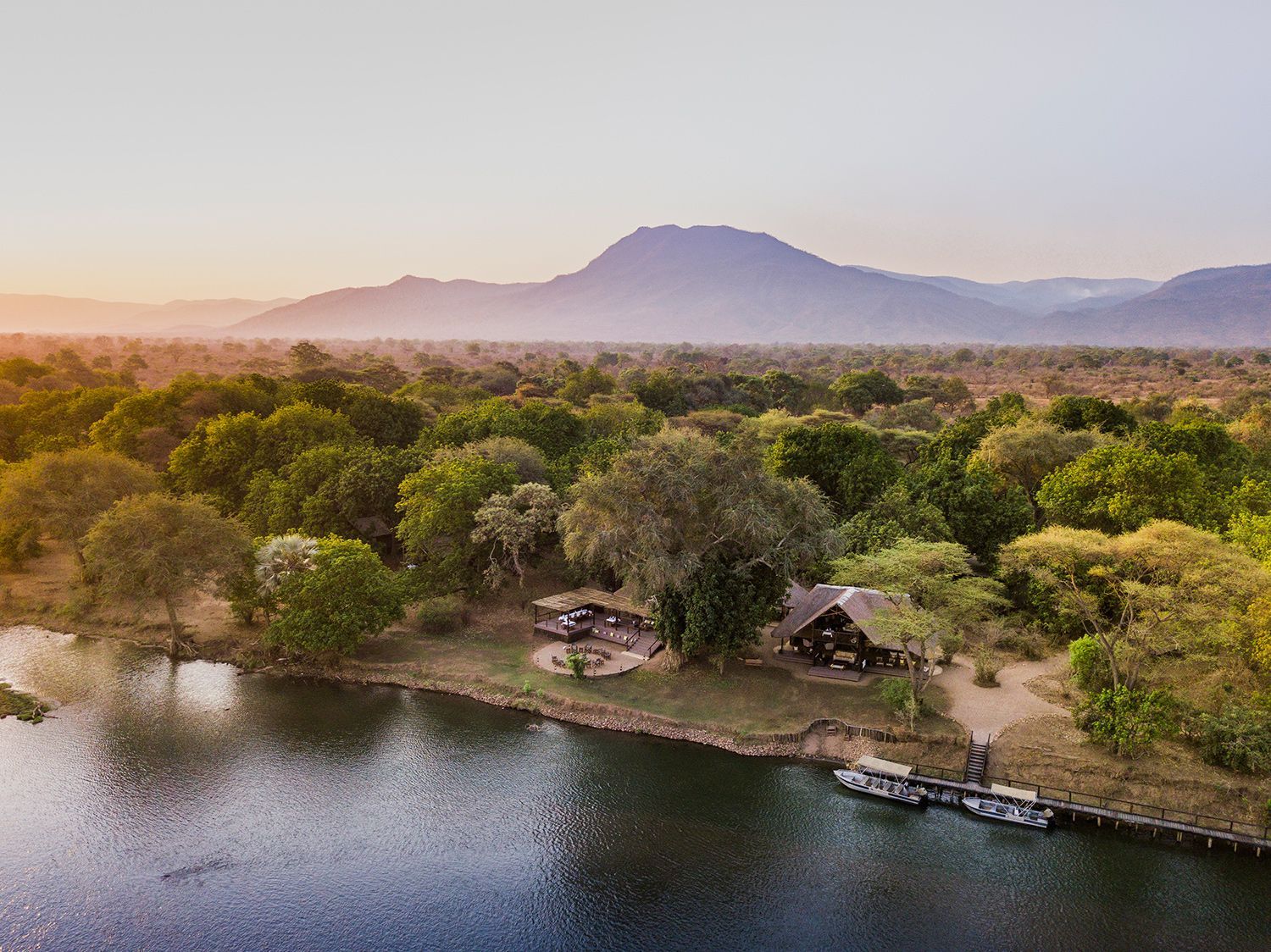
Lower Zambezi National Park
Located downstream below the Kariba Dam, where the Zambezi River becomes wide and lazy, the Lower Zambezi Valley is a veritable African paradise that's part of the Kavango-Zambezi Transfrontier Park initiative - a conservation area that spans four countries and two critically important river systems. This is the home of the Lower Zambezi National Park - a breathtaking landscape of low hills and mountains that kiss the river's wide floodplains, with swathes of Afro-montane thicket, lush riparian forests, groves of huge winterthorns, open grasslands and wetlands. It's home to huge herds of elephant and buffalo, lion, leopard, cheetah, African wild dogs and hyena, as well as plenty of hippo and large crocodiles, all of which can be seen from land and river-based safari activities.
Musts: Canoeing the river's various channels; boat-based safaris; tiger fishing; sunset cruises on the main river; exploring the islands in the middle of the river; sand-bank picnics and sundowners; bush breakfasts; walking safaris; game drives
Lower Zambezi National Park
Located downstream below the Kariba Dam, where the Zambezi River becomes wide and lazy, the Lower Zambezi Valley is a veritable African paradise that's part of the Kavango-Zambezi Transfrontier Park initiative - a conservation area that spans four countries and two critically important river systems. This is the home of the Lower Zambezi National Park - a breathtaking landscape of low hills and mountains that kiss the river's wide floodplains, with swathes of Afro-montane thicket, lush riparian forests, groves of huge winterthorns, open grasslands and wetlands. It's home to huge herds of elephant and buffalo, lion, leopard, cheetah, African wild dogs and hyena, as well as plenty of hippo and large crocodiles, all of which can be seen from land and river-based safari activities.
Musts: Canoeing the river's various channels; boat-based safaris; tiger fishing; sunset cruises on the main river; exploring the islands in the middle of the river; sand-bank picnics and sundowners; bush breakfasts; walking safaris; game drives.
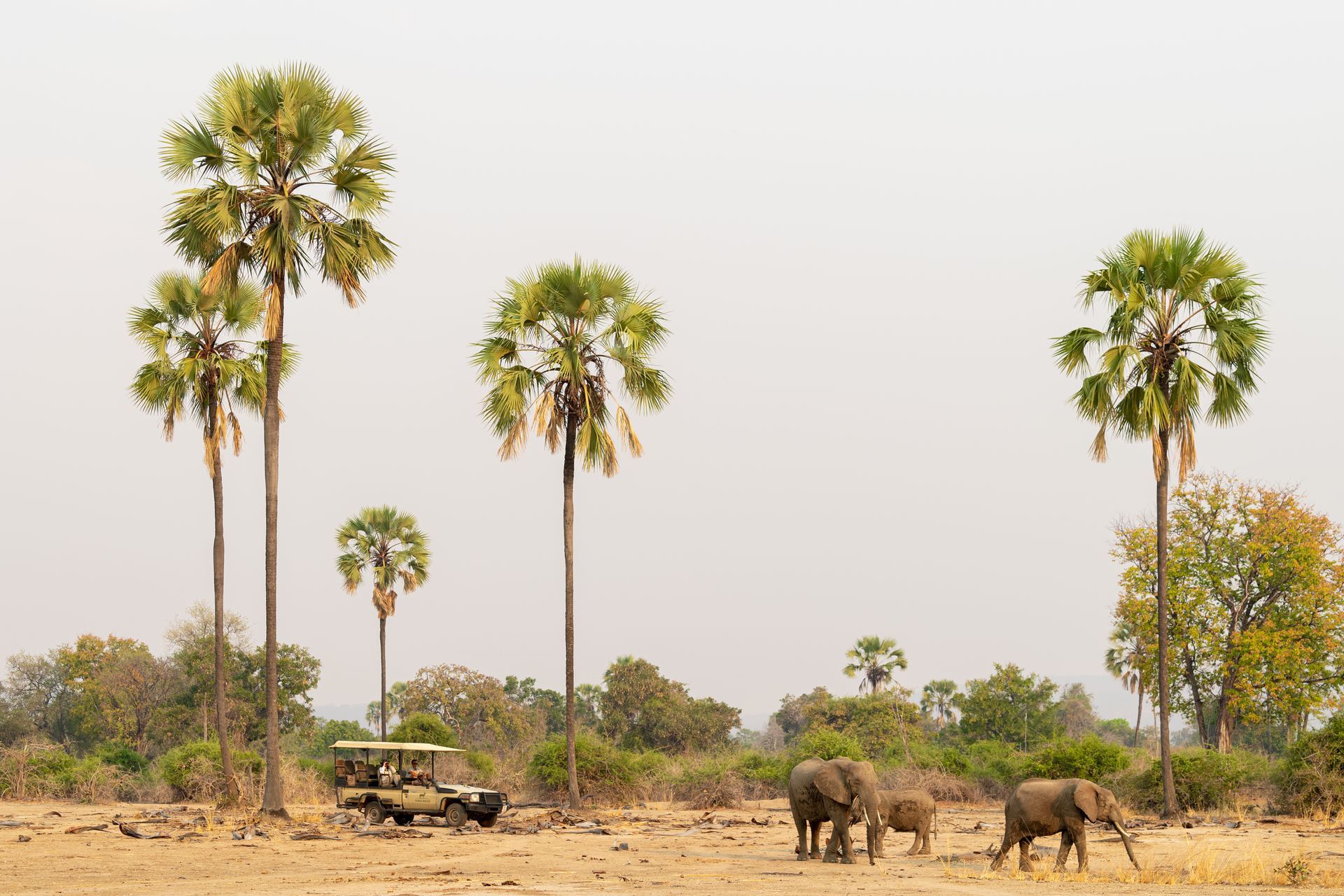
South Luangwa National Park
The traditional birthplace of the walking safari, the South Luangwa is one of Southern Africa's most celebrated wilderness areas, thanks to its rugged remoteness and high concentrations of wildlife, especially during the dry season when the seasonal Luangwa River begins to dry up, leaving pools packed with hippos and crocodiles that become a magnet to thirsty mammals and predators aplenty. Walking is the best way to experience this stunning place, heading out early in the mornings to avoid the heat of the day, getting an in-depth impression of life in the African bush in the process. A walk allows you to absorb the minutiae of the environment, from dung to tracks and so much more, finding out about the little things that are easily overlooked on a game drive. So don't forget your walking shoes!
Musts: Walking safaris; sand-bank sundowners; fly-camp sleepouts under the stars; game drives; night drives; stargazing
South Luangwa National Park
The traditional birthplace of the walking safari, the South Luangwa is one of Southern Africa's most celebrated wilderness areas, thanks to its rugged remoteness and high concentrations of wildlife, especially during the dry season when the seasonal Luangwa River begins to dry up, leaving pools packed with hippos and crocodiles that become a magnet to thirsty mammals and predators aplenty. Walking is the best way to experience this stunning place, heading out early in the mornings to avoid the heat of the day, getting an in-depth impression of life in the African bush in the process. A walk allows you to absorb the minutiae of the environment, from dung to tracks and so much more, finding out about the little things that are easily overlooked on a game drive. So don't forget your walking shoes!
Musts: Walking safaris; sand-bank sundowners; fly-camp sleepouts under the stars; game drives; night drives; stargazing.
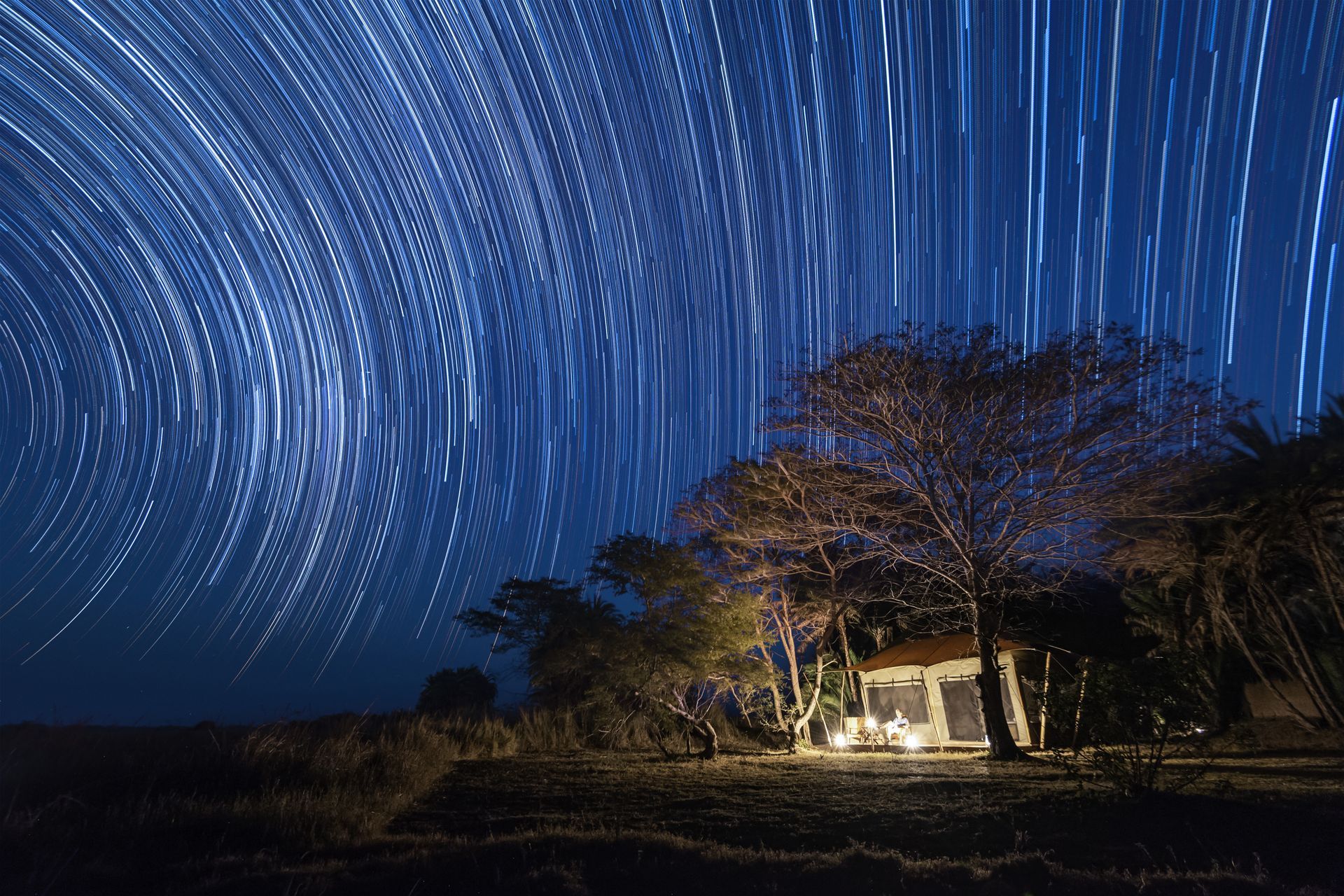
Kafue National Park
Coming in at a staggering 22,400km2, the Kafue National Park is one of Africa's biggest reserves and Zambia's oldest, being proclaimed in 1950. From the open floodplains and woodlands of the Busanga region in the north to the Nanzhila Plains in the south, the Kafue is a patchwork of rivers and shallow wetlands filled with a cornucopia of wild fauna and flora. The Kafue River cuts the park in half before flowing into the Itezhi Tezhi Dam, which has created a lush lake eco-system in the south-east of the park. With more than 500 bird species recorded, it's a birder's paradise, and also great for fishing, exploring the myriad river systems, walking and game drives in the dry season.
Musts: Fishing along the Kafue and from its many islands; walking safaris; game drives; night drives, boat-based safaris; canoeing; birding; island picnics, sundowners out on the plains
Kafue National Park
Coming in at a staggering 22,400km2, the Kafue National Park is one of Africa's biggest reserves and Zambia's oldest, being proclaimed in 1950. From the open floodplains and woodlands of the Busanga region in the north to the Nanzhila Plains in the south, the Kafue is a patchwork of rivers and shallow wetlands filled with a cornucopia of wild fauna and flora. The Kafue River cuts the park in half before flowing into the Itezhi Tezhi Dam, which has created a lush lake eco-system in the south-east of the park. With more than 500 bird species recorded, it's a birder's paradise, and also great for fishing, exploring the myriad river systems, walking and game drives in the dry season.
Musts: Fishing along the Kafue and from its many islands; walking safaris; game drives; night drives, boat-based safaris; canoeing; birding; island picnics, sundowners out on the plains.
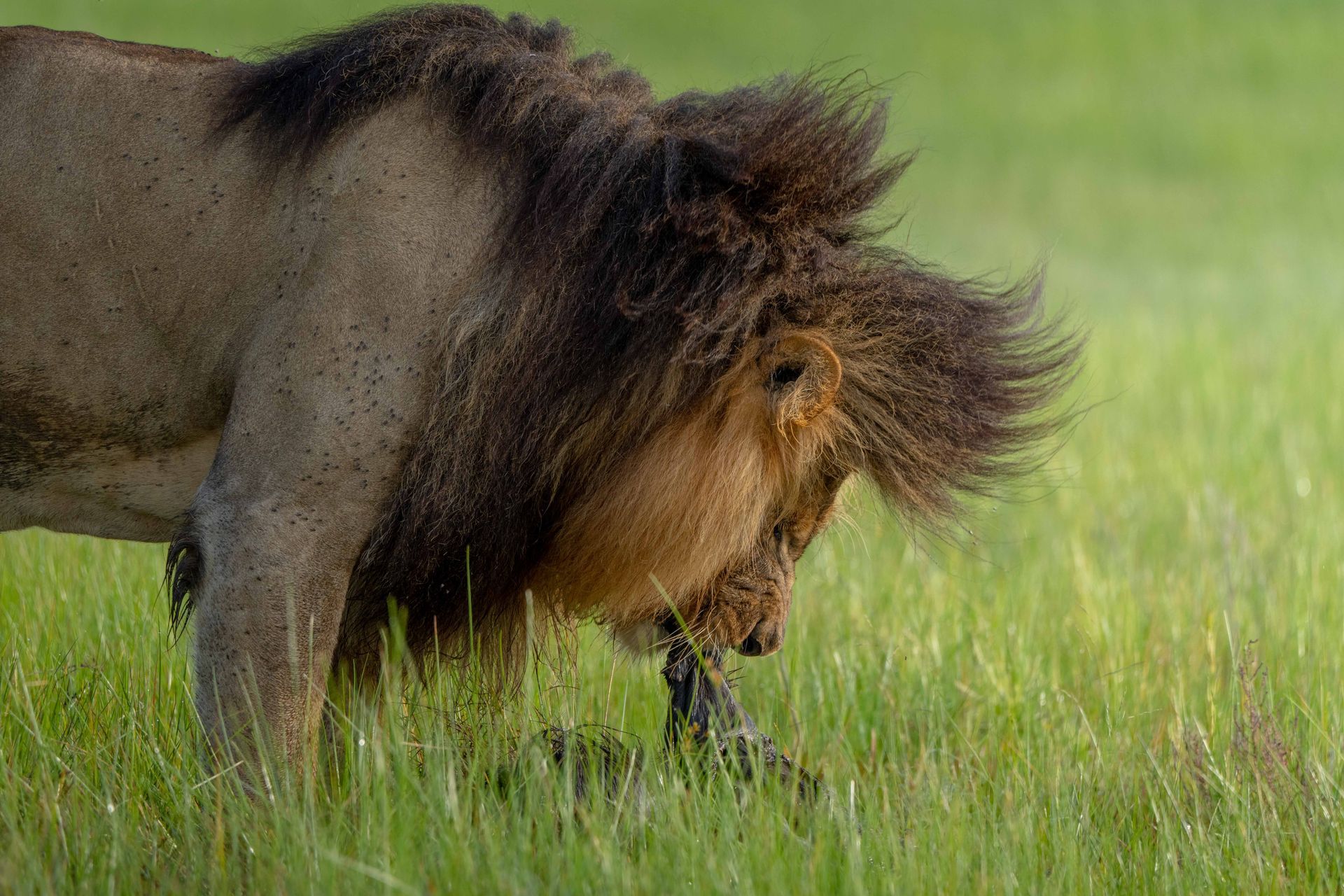
Liuwa Plain National Park
The home of the second largest wildebeest migration in the world, but without the crowds of the Masai Mara and Serengeti, Liuwa Plain National Park in western Zambia has one of Africa's oldest conservation histories, stretching back to the 1880s when King Lubosi Lewanika, appointed his people - the Lozi tribe - as custodians of this incredible place. Between December and April this year, Liuwa becomes a lush wetland thanks to the annual flooding of the Zambezi River in its western catchment area. It's at this time that thousands of wildebeest migrate from neighbouring Angola, moving onto the plains to graze on the rich grasses. This emerald season is also when the floodplains are thronging with birds, making it a haven for keen ornithologists. The dry season's game viewing includes lots of predator action with cheetah, a growing lion population and African wild dogs.
Musts: Billion-star sleepouts on the plains; game drives; night drives; walking safaris; canoeing (in season)
Liuwa Plain National Park
The home of the second largest wildebeest migration in the world, but without the crowds of the Masai Mara and Serengeti, Liuwa Plain National Park in western Zambia has one of Africa's oldest conservation histories, stretching back to the 1880s when King Lubosi Lewanika, appointed his people - the Lozi tribe - as custodians of this incredible place. Between December and April this year, Liuwa becomes a lush wetland thanks to the annual flooding of the Zambezi River in its western catchment area. It's at this time that thousands of wildebeest migrate from neighbouring Angola, moving onto the plains to graze on the rich grasses. This emerald season is also when the floodplains are thronging with birds, making it a haven for keen ornithologists. The dry season's game viewing includes lots of predator action with cheetah, a growing lion population and African wild dogs.
Musts: Billion-star sleepouts on the plains; game drives; night drives; walking safaris; canoeing (in season).

The when...
Are you suffering from a diary debacle? Try this easy breakdown of the seasons in Zambia together with recommendations on great times to visit and why. We hope it does the trick!
-
Spring
When: September to November.
What to expect: Lovely warms days building to a peak in temperature before the first rains arrive. October can be challenging with high temperatures and gusty winds, especially in the Lower Zambezi. As the rains break, usually in November, the temperatures cool and humidity rises. Camps in the Lower Zambezi and South Luangwa close for the rainy season, opening again in April.
Why visit: Spring is a wonderful time to be on safari in Zambia as the mercury rises, the waters of the Zambezi warm making fishing truly special and the days become longer. Migrant bird species begin to arrive and trees begin to flower.
-
Summer
When: December to February
What to expect: Very warm to hot days, warm evenings and spectacular thunderstorms.
Why visit: This is the emerald season when the African wilderness is green, green, green and new life is everywhere as many animals have their young during this time of plenty. However, most lodges in the Lower Zambezi and South Luangwa close due to the inaccessibility of roads in the rainy season. Some lodges on the outskirts stay open all year and offer great green season specials and activities tailored to suit the weather.
-
Autumn
When: March to May
What to expect: Lovely warm days and cooler evenings.
Why visit: You get the tail end of the summer greenery with the benefit of cooler temperatures and still have the chance to see some late baby animals. The humidity of summer dissipates, and the climate is perfect for activities like walking safaris, game drives and boat-based safaris. Most lodges in the Lower Zambezi and South Luangwa open for the season on 1 April.
-
Winter
When: June to August
What to expect: Cold mornings and nights, wonderfully warm days.
Why visit: This is the dry season when the bush thins out completely and wildlife stays close to water, making it the peak season for game viewing, especially where predator action is concerned. While you will need warm clothes for mornings and evenings, the days are sunny and warm with average daytime temperatures in the low to mid 20 degrees C. So it's shorts and T-shirts during the day and fleeces and beanies in the early mornings and evenings.

ABOUT US
For Sian Bester and Cara Lloyd, Zafaris is the result of years spent working at the coalface of the safari industry, learning their trade and perfecting it.
Zafaris isn't a regular travel company thanks to the fact that Sian and Cara don't just know their safari onions, they can also prepare and dish those onions up in a delectable and irresistible manner! Both have worked in lodges and have experience in the "how" of the art of safari at a practical level. They've also done their time working in large, corporate operators, sweating over the minutiae of countless itineraries.
Zafaris is the culmination of this experience - a boutique safari operator that's all about personal, professional service, expert recommendations and first-hand experience of the very best that Africa has to offer...
Zafaris is represented on
SafariBookings.
The when...
Are you suffering from a diary debacle? Try this easy breakdown of the seasons in Zambia together with recommendations on great times to visit and why. We hope it does the trick!
-
Spring
When: September to November.
What to expect: Lovely warms days building to a peak in temperature before the first rains arrive. October can be challenging with high temperatures and gusty winds, especially in the Lower Zambezi. As the rains break, usually in November, the temperatures cool and humidity rises. Camps in the Lower Zambezi and South Luangwa close for the rainy season, opening again in April.
Why visit: Spring is a wonderful time to be on safari in Zambia as the mercury rises, the waters of the Zambezi warm making fishing truly special and the days become longer. Migrant bird species begin to arrive and trees begin to flower.
-
Summer
When: December to February
What to expect: Very warm to hot days, warm evenings and spectacular thunderstorms.
Why visit: This is the emerald season when the African wilderness is green, green, green and new life is everywhere as many animals have their young during this time of plenty. However, most lodges in the Lower Zambezi and South Luangwa close due to the inaccessibility of roads in the rainy season. Some lodges on the outskirts stay open all year and offer great green season specials and activities tailored to suit the weather.
-
Autumn
When: March to May
What to expect: Lovely warm days and cooler evenings.
Why visit: You get the tail end of the summer greenery with the benefit of cooler temperatures and still have the chance to see some late baby animals. The humidity of summer dissipates, and the climate is perfect for activities like walking safaris, game drives and boat-based safaris. Most lodges in the Lower Zambezi and South Luangwa open for the season on 1 April.
-
Winter
When: June to August
What to expect: Cold mornings and nights, wonderfully warm days.
Why visit: This is the dry season when the bush thins out completely and wildlife stays close to water, making it the peak season for game viewing, especially where predator action is concerned. While you will need warm clothes for mornings and evenings, the days are sunny and warm with average daytime temperatures in the low to mid 20 degrees C. So it's shorts and T-shirts during the day and fleeces and beanies in the early mornings and evenings.
CONTACT US
Contact Us
We will get back to you as soon as possible.
Please try again later.
Contact Us
We will get back to you as soon as possible.
Please try again later.
CONTACT US
Contact Us
We will get back to you as soon as possible.
Please try again later.
Contact Us
We will get back to you as soon as possible.
Please try again later.
CONTACT US
Contact Us
We will get back to you as soon as possible.
Please try again later.
All Rights Reserved | Elgin Travel (Pty) Ltd, t/a Wildr.Africa
Designed & powered by: The Safari Collective
Designed & powered by: The Safari Collective
All Rights Reserved | Elgin Travel (Pty) Ltd, t/a Wildr.Africa
All Rights Reserved | Elgin Travel (Pty) Ltd, t/a Wildr.Africa
Designed & powered by:















